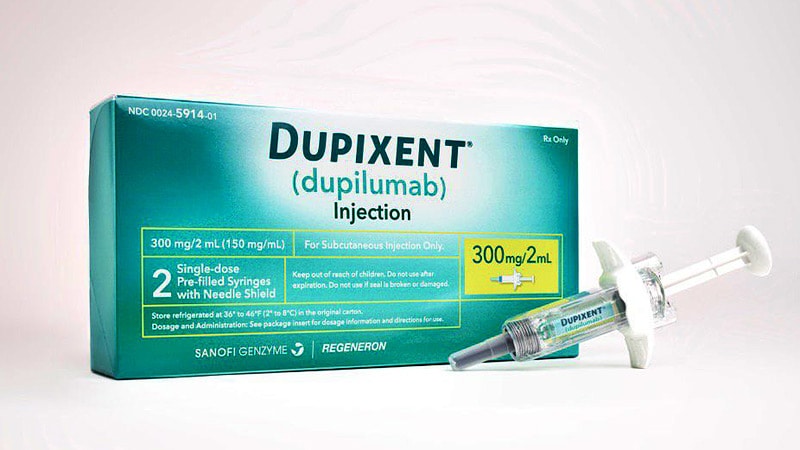Dupilumab-Associated Lymphoid Reactions in Atopic Dermatitis Patients
Core Concepts
Dupilumab treatment in atopic dermatitis patients can lead to lymphoid reactions that mimic mycosis fungoides.
Abstract
The content discusses the potential lymphoid reactions (LR) associated with dupilumab treatment in patients with atopic dermatitis (AD). It emphasizes the importance of careful diagnosis, monitoring for new symptoms, and thorough evaluation of suspicious reactions. The study examined patients treated with dupilumab, highlighting the need for vigilance in distinguishing between AD and mycosis fungoides (MF) due to the risk of misdiagnosis. The article provides insights from experts, emphasizing the significance of understanding the real-world implications of dupilumab use.
Dupilumab treatment can cause benign reversible lymphoid reactions in AD patients.
Careful monitoring and evaluation are essential to differentiate LR from MF.
Study findings suggest the importance of recognizing atypical presentations and potential risks associated with dupilumab therapy.
Recommendations for comprehensive workup and management of LR in patients undergoing dupilumab treatment.
Considerations for alternative treatment options in patients experiencing LR due to dupilumab therapy.
Study limitations and disclosures regarding relationships with biologic drug manufacturers.
Dupilumab-Associated Lymphoid Reactions Require Caution
Stats
"Among 14 (2.6%) patients who developed clinical suspicion of cutaneous T-cell lymphoma (CTCL) while on treatment, three actually had preexisting MF."
"The 11 patients with LR experienced biopsy-confirmed resolution once they discontinued dupilumab."
"The numbers of patients in whom LR or onset/exacerbation of MF occurs is extraordinarily low when compared to those helped immeasurably by dupilumab."
Quotes
"Dupilumab has become such an important first-line systemic medication for our patients with moderate to severe atopic dermatitis." - Raj Chovatiya, MD, PhD, MSCI
"AD and MF are easily confused for one another at baseline." - Robert Sidbury, MD, MPH
"The possibility that these LRs may represent a first step toward lymphoma requires dermatologists to remain vigilant in ruling out MF." - Joan Guitart, MD
Key Insights Distilled From
by John Jesitus at www.medscape.com 10-30-2023
https://www.medscape.com/viewarticle/997881
Deeper Inquiries
What implications might the findings of this study have on the broader use of dupilumab in atopic dermatitis patients
The findings of this study on dupilumab-associated lymphoid reactions in atopic dermatitis patients have significant implications for the broader use of dupilumab. Clinicians need to be cautious and vigilant when prescribing dupilumab, as it can lead to benign reversible lymphoid reactions that mimic mycosis fungoides. This necessitates careful monitoring of patients on dupilumab for any new or unusual symptoms that may indicate the development of lymphoid reactions. Additionally, clinicians should conduct a thorough workup of any suspicious lymphoid reactions to differentiate between benign reactions and more serious conditions like mycosis fungoides. The study underscores the importance of understanding the potential adverse effects of dupilumab in real-world clinical settings to ensure the safe and effective use of this medication for patients with moderate to severe atopic dermatitis.
How can clinicians effectively differentiate between benign lymphoid reactions and more serious conditions like mycosis fungoides
Clinicians can effectively differentiate between benign lymphoid reactions and more serious conditions like mycosis fungoides by paying close attention to the clinical presentation, histological features, and immunohistochemical characteristics of the lesions. Benign lymphoid reactions associated with dupilumab typically present with symptoms such as burning/pain, generalized erythematous maculopapular plaques, and severe lichenification on specific areas of the body. Histologically, these reactions show atypical lymphoid infiltrates with a lichenoid or perivascular distribution and intraepithelial T-cell lymphocytes dispersed throughout the upper epidermis. Immunohistochemically, dysregulated CD4:CD8 ratios and CD30 overexpression are common in benign lymphoid reactions. In contrast, mycosis fungoides is characterized by hyperconvoluted cerebriform lymphocytes aligned in the epidermal basal layer at the dermoepidermal junction, along with other distinct histological and immunohistochemical features. Clinicians should also consider conducting additional tests such as skin biopsy with T-cell receptor clonality assay, blood cell counts with flow cytometry analysis, and imaging studies to rule out mycosis fungoides in cases of suspected lymphoid reactions.
How might the development of newer AD biologics impact the management of lymphoid reactions associated with dupilumab
The development of newer atopic dermatitis (AD) biologics that target specific pathways, such as IL-13 inhibition without affecting IL-4, may impact the management of lymphoid reactions associated with dupilumab. These newer biologics, like tralokinumab and lebrikizumab, offer alternative treatment options for patients who experience lymphoid reactions or adverse effects with dupilumab. By targeting IL-13 specifically, these biologics may provide relief for AD symptoms without causing the same lymphoid reactions seen with dupilumab. Clinicians may consider transitioning patients who develop lymphoid reactions on dupilumab to these newer biologics as part of their treatment strategy. However, further research is needed to fully understand the efficacy and safety of these newer AD biologics in managing lymphoid reactions and other adverse effects associated with dupilumab.
0
